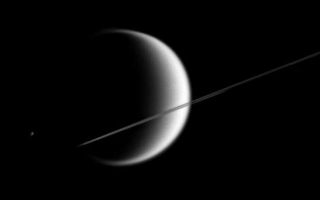
PIA08157: Crescent Moon with Rings
|

PIA07753: Naming New Lands - September Flyby (annotated)
|
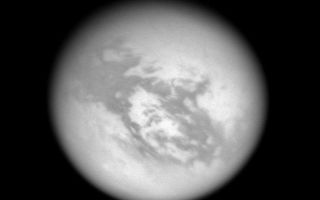
PIA08995: Above Adiri
|
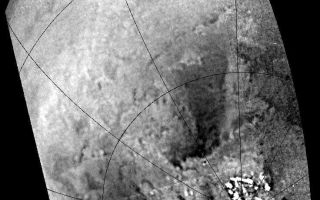
PIA06203: Tracing Surface Features on Titan--Mosaic
|
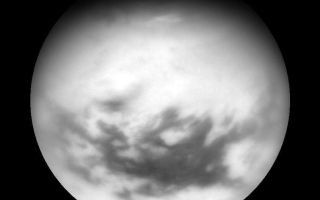
PIA08943: Titan "T28" View
|
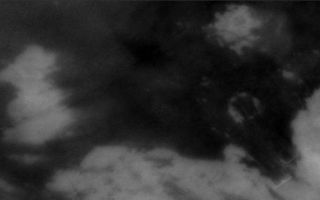
PIA07785: Comparing Notes on Titan -- Radar & Imaging Science Subsystem
|
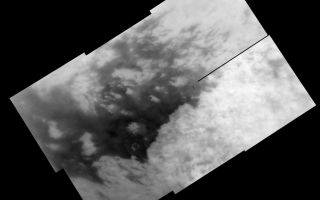
PIA07754: Naming New Lands - October Flyby
|
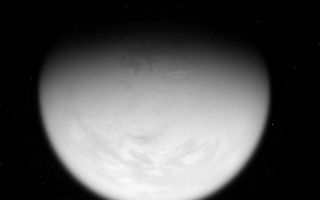
PIA08363: Giant Lake on Titan
|
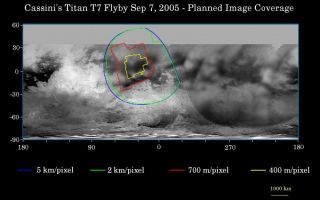
PIA07728: Cassini's Sept. 7, 2005, Titan Flyby
|
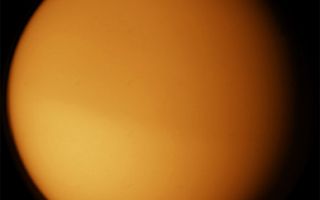
Saturne_Titan_1.jpg
|
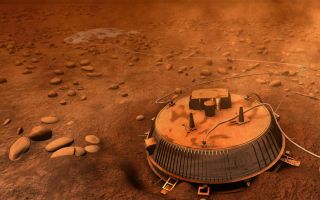
PIA06079: Huygens Landing Site Revisited (Animation - Artist's Concept)
|
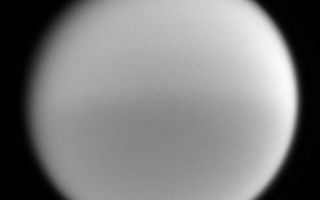
PIA06121: Seasonal Differences
|
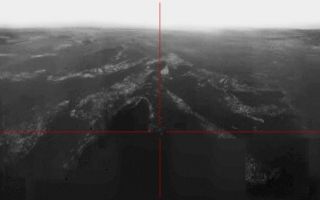
titan_pano-landing.jpg
|
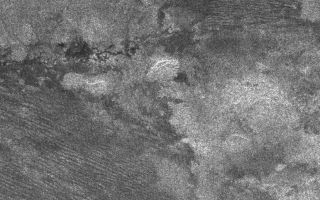
PIA03568: Diverse Geology
|

PIA06236: Titan: Complex 'Anti-greenhouse'
|
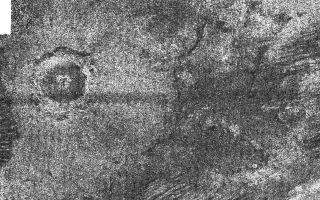
PIA08737: Crater Studies on Titan
|
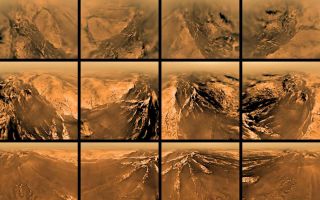
PIA08119: Views of Titan from Different Altitudes
|
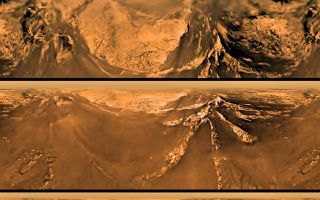
PIA08427: Mercator Projection of Huygens's View at Different Altitudes
|

PIA08351: Peeking at Saturn
|
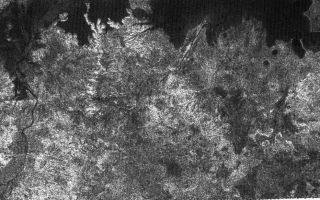
PIA01942: Titan's Great Lakes?
|
![<h1>PIA06998: Cassini Snaps Image of ESA's Huygens Probe</h1><div class="PIA06998" lang="en" style="width:800px;text-align:left;margin:auto;background-color:#000;padding:10px;max-height:150px;overflow:auto;"><p><a href="/figures/PIA06998_fig1.jpg"></a><br>Figure 1</p><p>The Cassini spacecraft snapped this image of the European Space Agency's Huygens probe about 12 hours after its release from the orbiter. The probe successfully detached from Cassini on Dec. 24, 2004, and is on course for its January 14 encounter with Titan.</p><p>The Huygens probe will remain dormant until the onboard timer wakes it up just before the probe reaches Titan's upper atmosphere on Jan. 14, 2005. Then it will begin a dramatic plunge through Titan's murky atmosphere, tasting its chemical makeup and composition as it descends to touch down on its surface. The data gathered during this 2-1/2 hour descent will be transmitted from the probe to the Cassini orbiter. Afterward, Cassini will point its antenna to Earth and relay the data through NASA's Deep Space Network to JPL and on to the European Space Agency's Space Operations Center in Darmstadt, Germany, which serves as the operations center for the Huygens probe mission. From this control center, ESA engineers will be tracking the probe and scientists will be standing by to process the data from the probe's six instruments.</p><p>This image was taken with the Cassini spacecraft wide angle camera at a distance of 18 kilometers (11 miles) from the probe on Dec. 25, 2004. The image has been magnified and contrast enhanced to aid visibility.</p><p>The Cassini-Huygens mission is a cooperative project of NASA, the European Space Agency and the Italian Space Agency. The Jet Propulsion Laboratory, a division of the California Institute of Technology in Pasadena, manages the mission for NASA's Science Mission Directorate, Washington, D.C. The Cassini orbiter and its two onboard cameras were designed, developed and assembled at JPL.</p><p>For more information about the Cassini-Huygens mission visit <a href="http://saturn.jpl.nasa.gov/">http://saturn.jpl.nasa.gov</a> and <a href="http://www.nasa.gov/cassini/">http://www.nasa.gov/cassini</a>.</p><br /><br /><a href="http://photojournal.jpl.nasa.gov/catalog/PIA06998" onclick="window.open(this.href); return false;" title="Voir l'image PIA06998: Cassini Snaps Image of ESA's Huygens Probe sur le site de la NASA">Voir l'image PIA06998: Cassini Snaps Image of ESA's Huygens Probe sur le site de la NASA.</a></div>]()
PIA06998: Cassini Snaps Image of ESA's Huygens Probe
|

Saturne_Titan_6.jpg
|
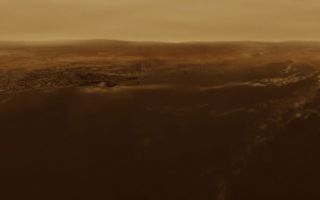
titan_approach.jpg
|
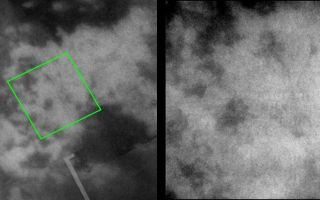
PIA06231: Jumbled Terrain
|
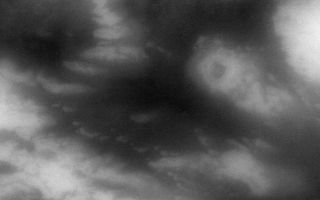
PIA08971: In Shangri-la
|
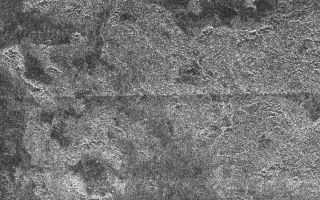
PIA08429: Impact Craters on Xanadu
|
![<h1>PIA06154: Approaching Titan Again</h1><div class="PIA06154" lang="en" style="width:497px;text-align:left;margin:auto;background-color:#000;padding:10px;max-height:150px;overflow:auto;"><p>Titan presented this face as the Cassini spacecraft approached for its second very close flyby of the mystery moon in December 2004. Prominent in the center of the image is Xanadu, a broad bright area on Titan first seen by NASA's Hubble Space Telescope in the mid-1990s. The region seen a few hours later during this Cassini encounter at higher resolution has just started to rotate into view on the left when this image was taken. Regions on the right (east) in this image had not been seen clearly before.</p><p>Other interesting features in this image, first seen by Cassini, include a bright 560-kilometer wide (345 mile) semi-circle in the lower right of Xanadu which may be an impact structure, and a confirmed crater with multiple concentric rings (near the upper right). The inner, dark circular feature in this crater is 300 +/- 20 kilometers (186 +/- 12 miles) in diameter.</p><p>Below Xanadu, two bright, linear clouds can be seen at about 38 degrees south latitude; these clouds were seen to dissipate a few hours later. Surprisingly, no clouds were seen near the south pole, as had been seen during the October close encounter (see <a href="/catalog/PIA06124">PIA06124</a>) and during the July distant encounter (see <a href="/catalog/PIA06110">PIA06110</a>).</p><p>This image was taken with the Cassini spacecraft narrow-angle camera on Dec. 10, 2004 at a distance of 1,746,000 kilometers (1,082,500 miles) and has a scale of 10.4 kilometers (6 miles) per pixel. A special filter in the near-infrared at 938 nanometers was used for this image. The image was processed to enhance surface features and sharpen boundaries. Some artifacts, like the false shadow around the bright streaked cloud, are a result of the processing.</p><p>[This caption was modified on March 16, 2005.] </p><p>The Cassini-Huygens mission is a cooperative project of NASA, the European Space Agency and the Italian Space Agency. The Jet Propulsion Laboratory, a division of the California Institute of Technology in Pasadena, manages the mission for NASA's Science Mission Directorate, Washington, D.C. The Cassini orbiter and its two onboard cameras were designed, developed and assembled at JPL. The imaging team is based at the Space Science Institute, Boulder, Colo.</p><p>For more information about the Cassini-Huygens mission, visit <a href="http://saturn.jpl.nasa.gov">http://saturn.jpl.nasa.gov</a> and the Cassini imaging team home page, <a href="http://ciclops.org">http://ciclops.org</a>.</p><br /><br /><a href="http://photojournal.jpl.nasa.gov/catalog/PIA06154" onclick="window.open(this.href); return false;" title="Voir l'image PIA06154: Approaching Titan Again sur le site de la NASA">Voir l'image PIA06154: Approaching Titan Again sur le site de la NASA.</a></div>](system/html/PIA06154-2755da6b.jpg)
PIA06154: Approaching Titan Again
|
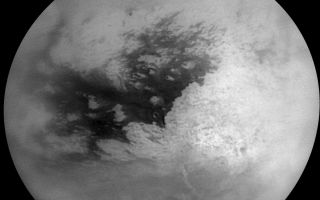
PIA06185: Titan Mosaic - Feb 2005
|

PIA07871: Huygens Titan Mosaic #2
|
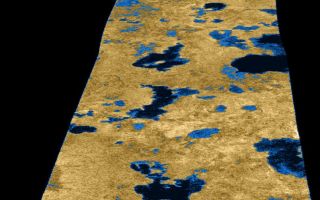
PIA09102: Liquid Lakes on Titan
|